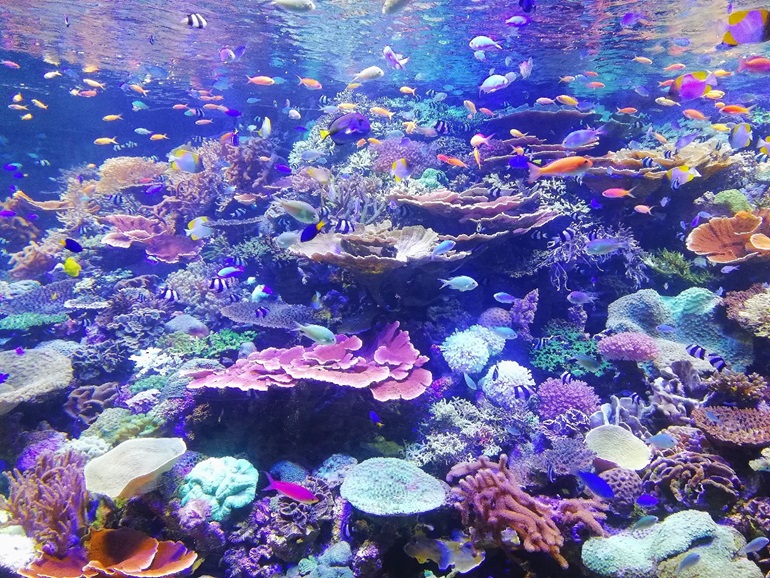When setting up an aquarium, one of the crucial decisions you’ll need to make is choosing the right substrate. The substrate, or the material that lines the bottom of the tank, serves several important purposes in an aquarium ecosystem. It provides a foundation for plants, helps maintain water quality, and contributes to the overall aesthetics of the tank. In this article, we will explore various types of substrates commonly used in aquariums, their unique characteristics, and their suitability for different aquatic environments. Additionally, we will discuss the concept of what is inert substrates.
-
Gravel Substrate
Gravel is one of the most popular choices for aquarium substrate. It is available in various sizes, colors, and textures, allowing for creative aquascape designs. Here are some key characteristics of gravel substrate:
- Plant Growth: Gravel provides a stable anchor for aquatic plants, allowing their roots to establish and grow. Plant roots can spread and penetrate the gaps between gravel particles, promoting healthy plant development.
- Water Circulation: Gravel substrate offers good water circulation, preventing debris from settling on the surface. This helps maintain water quality and reduces the risk of anaerobic pockets forming.
- Fish Compatibility: Gravel is suitable for a wide range of fish species, including those that like to sift through the substrate or dig for food. However, caution should be exercised with fish species that have delicate fins or barbels, as rough gravel can cause injury.
-
Sand Substrate
Sand is another popular substrate option due to its fine texture and natural appearance. Here are some important considerations when using sand as substrate:
- Bottom-Dwelling Fish: Sand is ideal for fish species that prefer to burrow or sift through the substrate. It provides a soft surface that won’t harm delicate fish, such as Corydoras or certain species of catfish.
- Compactness: Sand tends to compact over time, potentially reducing water circulation and leading to anaerobic conditions. This can affect the growth of beneficial bacteria and impact the overall health of the aquarium. Regular maintenance, such as stirring or siphoning the sand bed, can help mitigate compaction.
- Plant Growth: While some plants can thrive in sand substrate, others may struggle due to limited nutrient availability. Adding root tabs or using specialized fertilizers can help provide essential nutrients for plant growth.
-
Aquatic Soil Substrate
Aquatic soil, also known as planted tank substrate, is specifically designed to support the growth of aquatic plants. Here are its key features:
- Nutrient-Rich: Aquatic soil is enriched with essential nutrients that promote healthy plant growth. It provides a fertile substrate that helps plants establish strong root systems.
- pH Buffering: Some aquatic soils have the ability to buffer the water’s pH, creating a favorable environment for plants. This can be particularly beneficial for aquascaping enthusiasts aiming to create specific biotope setups.
- Plant Selection: Aquatic soil is highly recommended for aquariums focused on plant cultivation. It provides the necessary nutrients and support for a wide variety of aquatic plants.
-
Specialized Substrates
In addition to gravel, sand, and aquatic soil, there are other specialized substrates available for specific aquarium setups:
- Crushed Coral or Aragonite: These substrates are commonly used in marine or reef aquariums. They help maintain a higher pH and alkalinity level, promoting the growth of coral and other marine organisms.
- Vermiculite or Clay Substrate: These substrates are used in breeding setups, providing a soft and safe environment for fish eggs.
-
Inert Substrate
An inert substrate refers to a substrate material that does not significantly affect the water chemistry of the aquarium. It neither releases nor absorbs any chemicals or nutrients into the water. Examples of inert substrates include certain types of sand, such as quartz sand, and some types of gravel. Inert substrates are suitable for aquariums where specific water parameters need to be carefully controlled, such as in a species-specific setup or in combination with other water treatment methods.
Conclusion
Choosing the right substrate is essential for creating a healthy and visually appealing aquarium. Consider the needs of your aquatic plants, fish species, and the overall aesthetics you wish to achieve. Whether you opt for gravel, sand, aquatic soil, specialized substrates, or inert substrates, ensure that it supports the specific requirements of your aquarium inhabitants. By selecting the appropriate substrate, you can create a thriving aquatic environment that showcases the beauty of your underwater world.

Leave a Reply